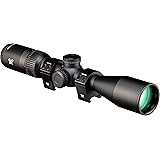In 2013, a harrowing event unfolded during the Ukrainian uprising, serving as a stark reminder of the extreme dangers faced by medical personnel in conflict zones. A 21-year-old medic, Olesya Zukovskaya, bravely volunteered her skills, yet found herself deliberately targeted by government snipers, despite her identifying insignia. Struck in the neck by a bullet, her personal struggle highlighted a critical, often overlooked aspect of providing aid: the necessity of adapting traditional medical practices for hostile environments. As discussed in the accompanying video by Dr. Joe Alton, known as Dr. Bones of DoomandBloom.net, the principles of conventional care often need to be re-evaluated when the provider themselves is under threat, shifting focus towards what is truly effective in ensuring survival. This profound challenge forms the cornerstone of tactical survival medicine, demanding a blend of medical knowledge and strategic thinking to safeguard lives when civil unrest or disaster scenarios manifest.
The Perilous Reality of a Medic Under Fire
The incident involving Olesya Zukovskaya is not an isolated case; unfortunately, medics and journalists have historically been targeted in various conflicts, a practice that directly contravenes international laws such as the Geneva Convention. While the red cross is universally recognized as a symbol of neutrality and protection, it can, paradoxically, become a beacon for hostile forces. The rationale behind such reprehensible tactics is often to cripple the enemy’s morale and operational capacity by eliminating those responsible for life-saving interventions. Therefore, a primary piece of advice offered by seasoned experts in tactical medicine is to avoid overt displays of medical insignia that could draw unwanted attention. Instead, a less conspicuous approach is often advised for those operating in unpredictable or dangerous settings.
Consideration must be given to the environment in which medical care is being administered. If, for instance, a group medic is operating in a remote area during a period of civil unrest, a situation imagined by many preparedness enthusiasts, their role changes dramatically from that of a conventional healthcare provider. The primary objective shifts from providing ideal medical treatment to delivering care that is both effective and tactically sound, ensuring the safety of both the medic and the casualty. This necessitates a deep understanding of immediate threats and the application of principles that prioritize survival above all else.
Distinguishing Between Good Medicine and Good Tactics
The practice of medicine in a safe, controlled hospital environment is vastly different from providing care under fire. What might be considered ‘good medicine’ in a clinic, such as comprehensive diagnostic procedures or meticulous wound cleaning, could, in an unsafe environment, become ‘bad tactics,’ potentially leading to further casualties or even death. This critical distinction forms the core of Tactical Combat Casualty Care (TCCC), a set of guidelines developed for battlefield medicine that is increasingly being adapted for civilian survival and preparedness scenarios.
In TCCC, the immediate priorities are dictated by the tactical situation. For example, extensive patient assessment that involves prolonged exposure to a dangerous area would be forgone in favor of rapid, life-saving interventions. Imagine a scenario where a casualty is bleeding profusely in an active engagement zone. While a full spinal assessment would be standard practice in an emergency room, under active fire, controlling catastrophic hemorrhage is the immediate, overriding concern. Such an approach, while appearing unconventional to those unfamiliar with tactical principles, is purposefully designed to maximize survival rates in extremely high-risk situations.
Arming Medics and Threat Abolition: A Difficult But Necessary Stance
A contentious yet crucial question often raised in discussions about medics in hostile environments is whether they should be armed. Historically, medics have been non-combatants, relying on their protected status. However, as demonstrated by incidents like the Zukovskaya case, this protection is not always guaranteed. The most effective medical care under fire often involves the elimination or suppression of the threat. This means that, in certain dire circumstances, a medic might need to assist in providing suppressive fire to protect themselves and their patients, a concept that is certainly challenging for those dedicated to healing.
The reasoning behind this strategy is pragmatic: a medic cannot treat the wounded if they themselves become a casualty, or if the environment remains lethally dangerous. The primary objective is to abolish all threats. Only when a reasonable level of safety is established can effective medical care truly commence. For many, this represents a significant mental hurdle, as the instinct of a medic is to immediately attend to the wounded. However, history is replete with examples of medics becoming casualties themselves while attempting to reach or treat those already beyond help, or by rushing into an uncontrolled line of fire. Therefore, threat management is not merely a tactical maneuver; it is a prerequisite for successful patient care in an active threat environment.
The Limitations of Conventional Medical Tools in Combat Scenarios
Furthermore, the utility of many standard medical evaluation tools is severely diminished when operating in a hostile environment. Practical considerations often render sophisticated equipment useless or even dangerous. For instance, attempting to listen to a casualty’s chest with a stethoscope amidst heavy gunfire or explosions would be an exercise in futility. The ambient noise levels would make accurate auscultation impossible.
Similarly, the use of a headlamp at night to illuminate wounds, a common practice in conventional field medicine, could transform the medic into a clear target, effectively creating a bullseye for snipers or hostile forces. In such circumstances, improvisational lighting methods or reliance on ambient light sources would be safer, even if less ideal for detailed examination. These examples underscore the principle that survival medicine requires a fundamental re-evaluation of equipment and techniques, favoring simplicity, discretion, and resilience over complexity or traditional convenience.
Prioritizing Life-Saving Interventions: Beyond Standard Protocols
When resources are scarce, and the environment is volatile, a strict hierarchy of medical interventions must be adhered to. The primary goal is to address the most immediate life threats, and in trauma, this overwhelmingly points to hemorrhage control. Catastrophic bleeding, often from arterial sources, can lead to death within minutes, making its immediate management paramount. This stark reality means that certain interventions, typically considered fundamental in civilian trauma care, may be deprioritized or even omitted in a tactical situation.
For example, cervical spine immobilization, a basic step in the evaluation and transport of trauma victims in a safe environment, is frequently bypassed in tactical scenarios. While maintaining spinal precautions is crucial in conventional settings to prevent secondary injury, the time and effort required for proper immobilization can be a fatal delay when rapid hemorrhage control is needed, or when evacuating a casualty from an active threat. In a dire situation, stopping heavy bleeding with a tourniquet or direct pressure will be the most likely way to save a life, even if other “good medicine” steps cannot be performed. The focus is on intervention that yields the highest probability of survival in the shortest possible time, acknowledging that resources and safety are severely constrained.
Key Priorities When Providing Care in Hostile Environments:
- Abolish or Suppress the Threat: Before any direct patient care is initiated, the immediate danger must be neutralized or mitigated. This could involve returning fire, finding superior cover, or signaling for assistance.
- Avoid Exposure to Enemy Fire: Medics must prioritize their own safety while attempting to reach a casualty. Rushing into an uncontrolled situation serves no one. Strategic movement and utilization of cover are crucial.
- Get Casualty to Reasonable Cover: Once the immediate threat is managed, the next priority is to move the casualty (and yourself) to a safer position where initial, rapid treatment can begin with less risk.
- Apply Tourniquet for Heavy Bleeding: Catastrophic hemorrhage is the leading cause of preventable death in trauma. A tourniquet should be applied quickly and effectively to any limb with severe bleeding, often as the first step after ensuring safety. Direct pressure and other hemostatic methods should follow as appropriate.
- Plan for Transport and Evacuation: From the outset, a strategy for moving the casualty away from hostile forces and towards definitive care must be formulated. This includes assessing available resources, routes, and potential challenges.
The Imperative of Cross-Training: Every Group Member as a First Responder
Perhaps one of the most vital takeaways for any group preparing for extended survival scenarios is the absolute necessity of cross-training. Reliance on a single “group medic” can be a catastrophic vulnerability. Imagine if the designated medic is the one who becomes incapacitated, bleeding from a wound or suffering a severe injury. If no one else in the group possesses even basic life-saving medical skills, the chances of that medic’s survival, and indeed the group’s overall resilience, plummet dramatically. It is not enough for one person to be knowledgeable; a robust system of shared competence must be established.
Every member of a survival group or family unit should possess a fundamental understanding of emergency medical procedures. The ability to give concise, clear instructions to others during a crisis is invaluable, but only if those instructions can be understood and executed. The more individuals who know how to deal with common medical issues, from controlling bleeding to recognizing the signs of shock, the higher the collective chances of success, even when external support is non-existent. This distributed knowledge acts as a force multiplier, creating a more resilient and self-reliant unit capable of handling a wider array of medical challenges.
Essential Skills for Every Group Member:
- Correct Tourniquet Application: Each person should not only carry a tourniquet but know how to apply it to themselves and others, effectively and quickly. This is often practiced during medical preparedness courses.
- Direct Pressure and Wound Packing: Understanding how to apply sustained direct pressure to a bleeding wound and how to pack a deep wound with hemostatic gauze is critical for non-extremity bleeding.
- Basic Airway Management: Simple techniques to open and maintain an airway in an unconscious person can be life-saving.
- Recognition and Management of Shock: Identifying the early signs of shock and knowing how to position a casualty, keep them warm, and manage fluid intake can prevent deterioration.
- Fracture Immobilization: Basic splinting techniques using readily available materials can prevent further injury and manage pain for broken bones.
- Effective Communication Under Duress: The ability to clearly convey information, receive instructions, and maintain composure during a medical emergency is paramount for effective teamwork.











